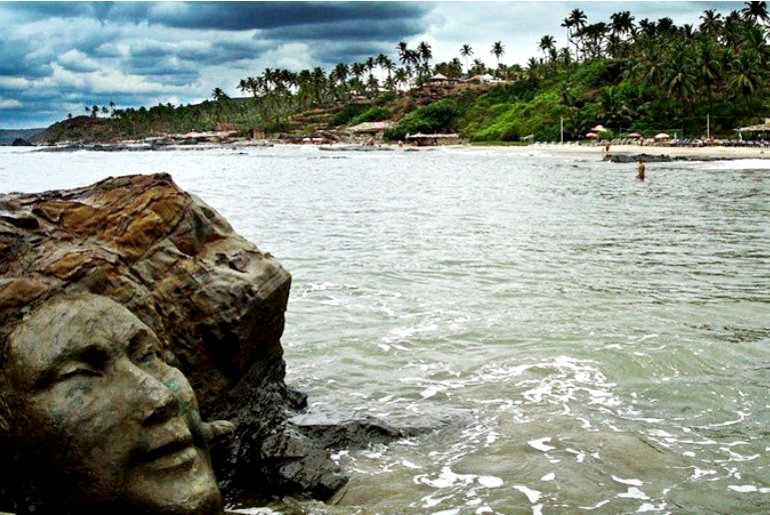Nudity In India: History, Laws & Controversies - Explained
Is the concept of public nudity in India a simple matter of black and white? The reality is far more nuanced, a complex tapestry woven with threads of religious tradition, cultural practice, social norms, and legal constraints, leading to a landscape where perceptions and acceptance vary dramatically.
The history of nudity in India is a deeply rooted and multifaceted one. While the modern, urban landscape largely frowns upon public displays of nudity, specific religious and cultural contexts have, at times, embraced forms of nudity. These have served as powerful symbols of purity, renunciation, or spiritual devotion. For example, in certain ascetic traditions, the rejection of clothing is seen as a means of shedding worldly attachments and embracing a simpler, more spiritual existence. Conversely, societal norms within contemporary urban India often view such displays with disapproval.
| Topic: | Nudity in India - Legal and Cultural Aspects |
| Overview: | A complex interplay of religious, cultural, and legal factors shapes the perception and practice of nudity in India. |
| Legal Framework: | Public nudity is generally illegal under Indian law, specifically Section 294 of the Indian Penal Code (IPC), which deals with obscene acts in public. However, there are nuances and exceptions. |
| Cultural Context: |
|
| Naturism: |
|
| Legal Consequences: |
|
| Examples: |
|
| International Comparisons: |
|
| Additional Considerations: |
|
| Reference Website: | Wikipedia - Nudity in India |
The legality of public nudity in India is clear: it is generally forbidden. Section 294 of the Indian Penal Code (IPC) addresses obscene acts, and public displays of nudity often fall under this category. Those found violating these laws face the risk of arrest, prosecution, and potentially imprisonment or fines. The application and enforcement of these laws, however, can vary depending on the local context and interpretation.
- Keeganmichael Key Net Worth How He Earned 12m
- Robert Goulet Louise Longmore Relationship Timeline Family
It's important to acknowledge the diverse cultural viewpoints on this subject. In northern India, for example, ancient carvings found on Buddhist stupas showcase women, seemingly dancers or attendants, depicted nude above the waist. This historical representation provides a contrasting perspective. According to some historical assessments, there is no question about the nudity of the women in this sculpture; it was simply a part of the artistic and cultural expression of that time.
The intersection of law, culture, and individual expression becomes most apparent when considering situations like the case involving Urfi Javed, a television actress and social media personality. Her public appearances and attire choices have led to public complaints, resulting in police involvement, highlighting the tension between freedom of expression and societal norms. The legal system is often challenged to balance the complexities of such cases.
The concept of naturism, or the practice of embracing the body in its natural state, also presents an interesting facet of this discussion. In India, there are connections between naturism and traditional practices that celebrate the body and its relationship with nature. This echoes the ancient philosophy of gymnosophy, which advocated a simple, nude lifestyle. However, because public nudity is generally illegal, naturism must be approached with discretion. Naturist meetups, if they occur, are typically cloaked in secrecy to avoid drawing unwanted attention from the public domain.
- Jessie Lee Ward Net Worth How She Built A 6m Empire
- Golf Insurance Protect Yourself Your Game Expert Guide
The perception of nudity also changes across generations and social spheres. Contemporary discussions on the appropriateness of childhood nudity reflect this evolving landscape, showing a broad spectrum of attitudes and regulations worldwide. Some may view it as natural, while others find it inappropriate.
The legal system has addressed public nudity in different ways over time. The Indian Penal Code of 1860, along with subsequent laws like the Information Technology Act of 2000 and amendments to the Constitution of India, provide a legal framework for managing the issue. Court cases, such as Ajay Goswami v. Union of India (2007), offer critical precedents that contribute to the current understanding of these laws.
In a global context, public nudity laws differ. For example, Spain legalized public nudity in 1988. Yet, even in such locations, there might be regulations for certain zones. These contrasting approaches illuminate the complexities of a subject that is influenced by legal, cultural, and societal considerations.
Instances of public nudity, even when intended to draw attention to a cause, often lead to legal consequences. The effectiveness of such acts becomes a matter of debate. While they can highlight a subject, they can also overshadow the intended message.
Consider the impact of this issue on different social strata. The legal and social consequences can impact all. News stories have emerged where the act of parading a woman naked in India sparked widespread outrage, highlighting the gravity of the violations. Legal experts and gender rights activists are often concerned because the law is not sufficient.
The legal interpretation of these acts often centers on determining what constitutes an "obscene act" and whether that act took place in a public space. Legal frameworks such as the Indian Penal Code (IPC) define such acts. These can include any act that is lascivious, indecent, or that offends public morals, and can lead to prosecution. However, because not all acts of public nudity are considered criminal, there remains some room for lawful expression or activities in certain circumstances, which is a crucial factor in the discussion.
This subject involves a tangled web of cultural attitudes and legal procedures. It underscores the importance of a multifaceted approach when examining issues involving public displays of nudity in India. The context, intention, and community perceptions all contribute to determining whether an act is lawful or unlawful.
- Hugh Rodhams Net Worth How Rich Is He 2024 Update
- Loretta Devine Wiki Age Children Husband More Discover Now

Daily Brief Who is Rehana Fathima, activist who won 'nudity’ case in

What made these grannies go nude in public? BBC News

5 Nude Beaches Of India That Must Have Missed Your Eyes